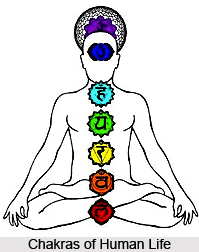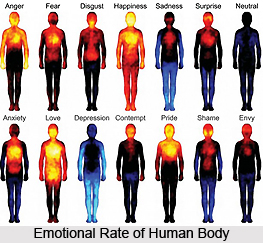 To stimulate the emotional body, there are some simple exercises especially designed which not only stimulates the emotional body but also are some of the means to develop the chakra.
To stimulate the emotional body, there are some simple exercises especially designed which not only stimulates the emotional body but also are some of the means to develop the chakra.
1. Emotional Body-Physical Level- Stomach
This chakra associates to one`s ability to endure things or digest what occurs to them, not just on the physical level, but also with one`s own emotions. It is advised to softly massage the stomach and then to relax it. One must be in touch with their stomach and ask what emotions one needs to assimilate better.
2. Emotional Body-Emotional Level- The navel
This is the chief location of one`s emotions and feelings. As one tunes into this chakra, one needs to ask for positive, wonderful feelings that one should utter more. Later, one can ask the chakra what negative or unstable feelings are stored there.
3. Emotional Body-Mental Level- Lower back on the spine just above the root chakra
This chakra associated with one`s attitude about one`s feelings. One can ask if they are extremely serious. Does one possess a sense of humour with themselves? The chakra should be massaged and asked where in life one takes oneself quite seriously; it can also be asked what is needed to take oneself more critically.
 4. Emotional Body-Intuitional/Compassionate Level- The xiphoid process, on the end of the breastbone
4. Emotional Body-Intuitional/Compassionate Level- The xiphoid process, on the end of the breastbone
In its deeper sense, this chakra associates to inner direction- the silent, tiny voice inside. In its more negative sense, it may associate to remorse feels and limitations inflicted on others. The area needs to be softly massaged. One needs to ask if one has remorse feelings that have been imbedded from others. It is advised to drive in deeper; one needs to `ask`, what remorse feelings one has heard from one`s own silent, tiny voice. If one can discover anything, it is advised to meditate and work over them. This area also associates with depth and a deep sense of who one is and how one can develop; it is like the seed of the self. One can ask, how actually one can be truer to their own self.
5. Emotional Body-Will/Spirit Level- Below the waist on the spine
This chakra exemplifies an emotional will bringing intensity to one`s feelings. If not used well, it overrides and makes one exceedingly emotional. If so, the area needs to massaged and one can ask in what areas one needs to have more positive power from one`s feelings and in what areas one becomes touchy.
6. Emotional Body-Soul Level- Chakras on both sides of the compassionate heart chakra
The chakra on the left associates to one`s feelings about loving. Does one feels fine about it? Does loving makes one cheerful or does it makes one feel shameful? The chakra on the right side is related to mental attitudes- "I should be loving this person", or "I shouldn`t be loving this person"- and beliefs of having the right to love. If one`s compassionate heart chakra is flowing and open, he/she knows the ones on both sides of it are unclouded.
These chakras exerts conditions one one`s love. Both of them should be massaged; and the energy should be allowed to flow. The left one can be asked as to how it exerts conditions on one`s loving; then, the right should be questioned as to where it exerts conditions on one`s loving. One needs to understand the feeling of their openness. The compassionate heart chakra between them must be allowed to relax.
7. Emotional Body-Divine Level Center of upper chest
The area needs to be opened up. One must think of the companion chakras as tranquil and open. One must question if one feels sheltered enough within oneself to let energy flow here in unrestricted love to other people. This does not mean one has to like or consent of others opinions or actions, only that, one can love unconditionally. One can question the chakra, whom do they and whom they do not love unreservedly.




















